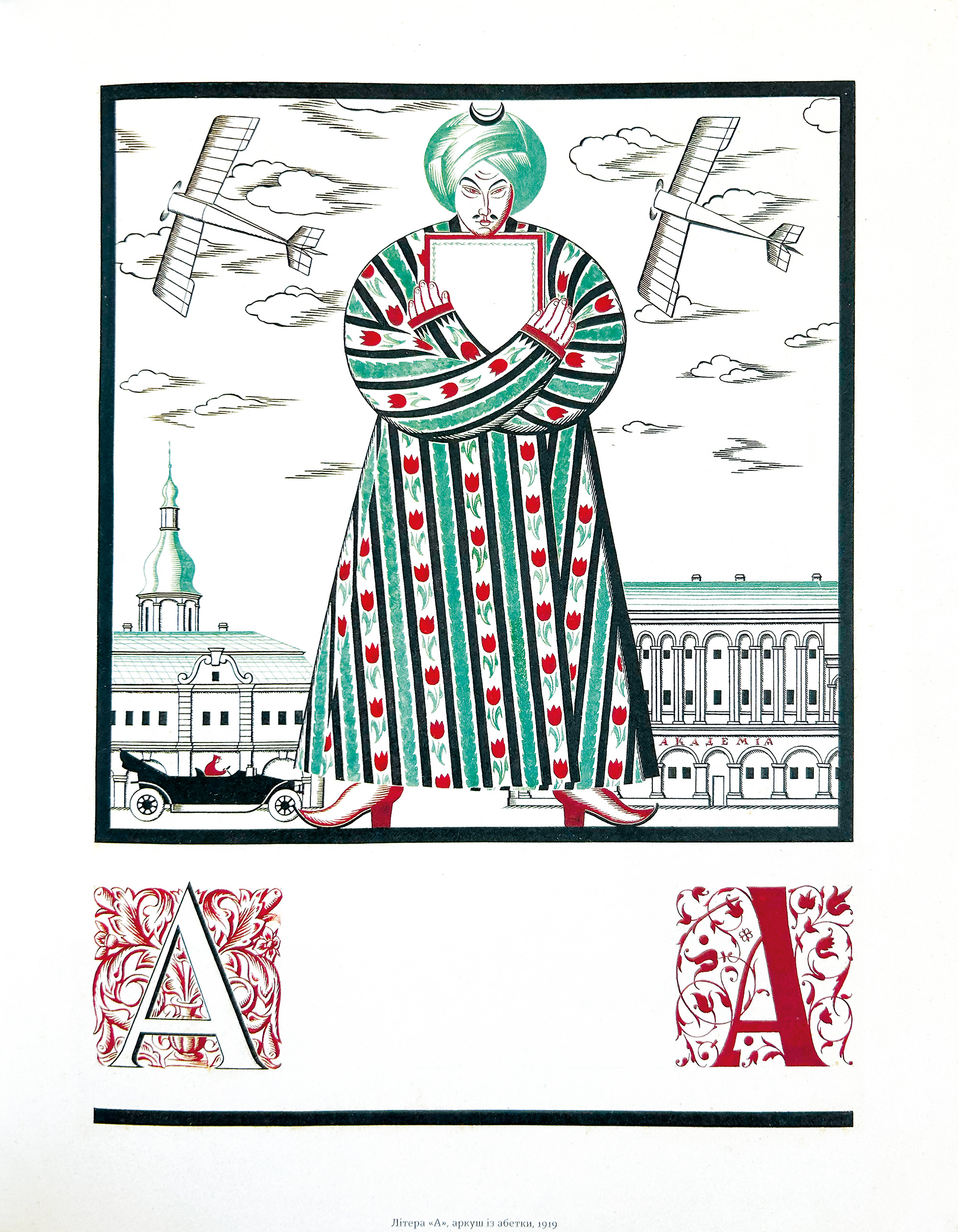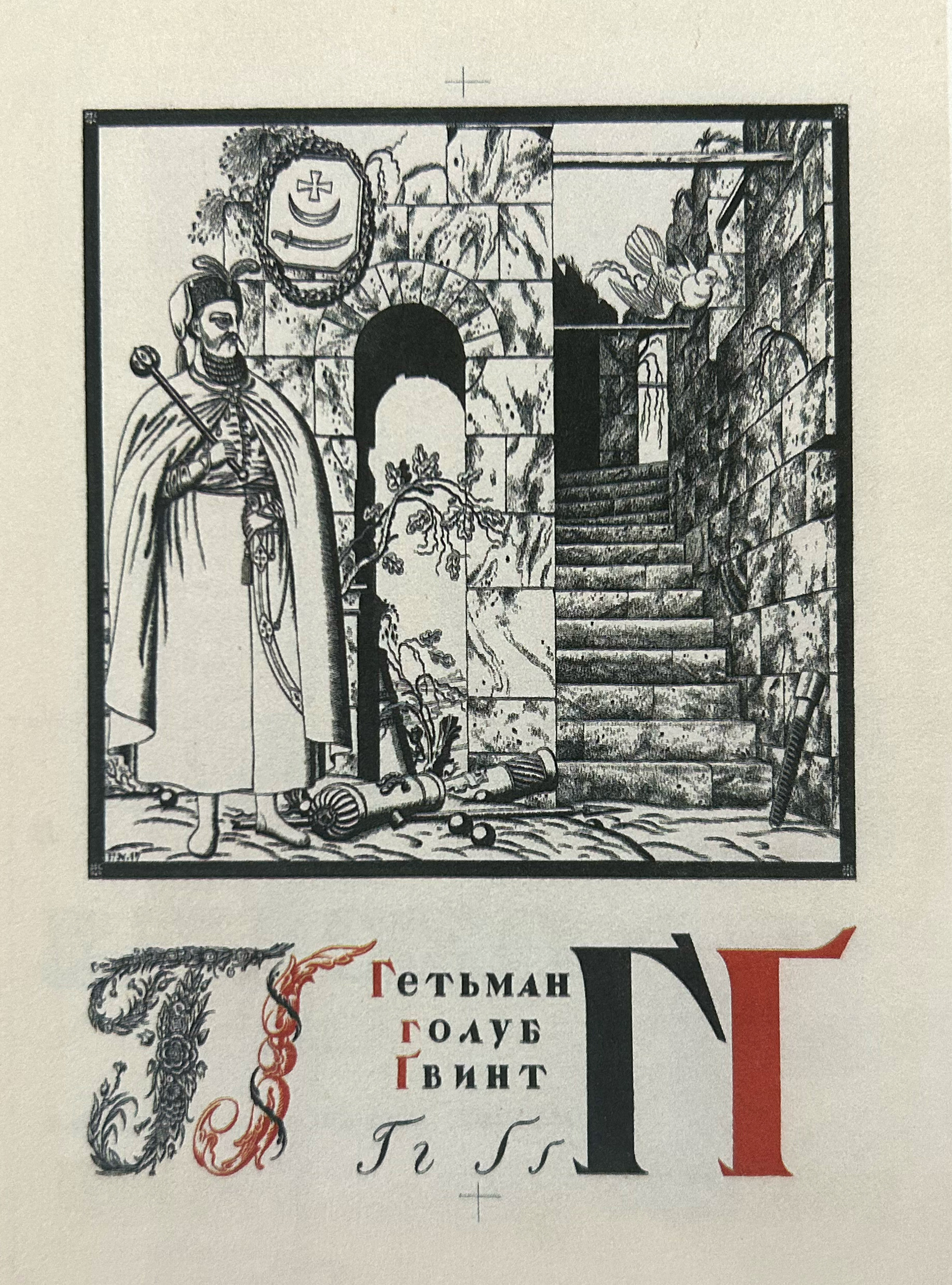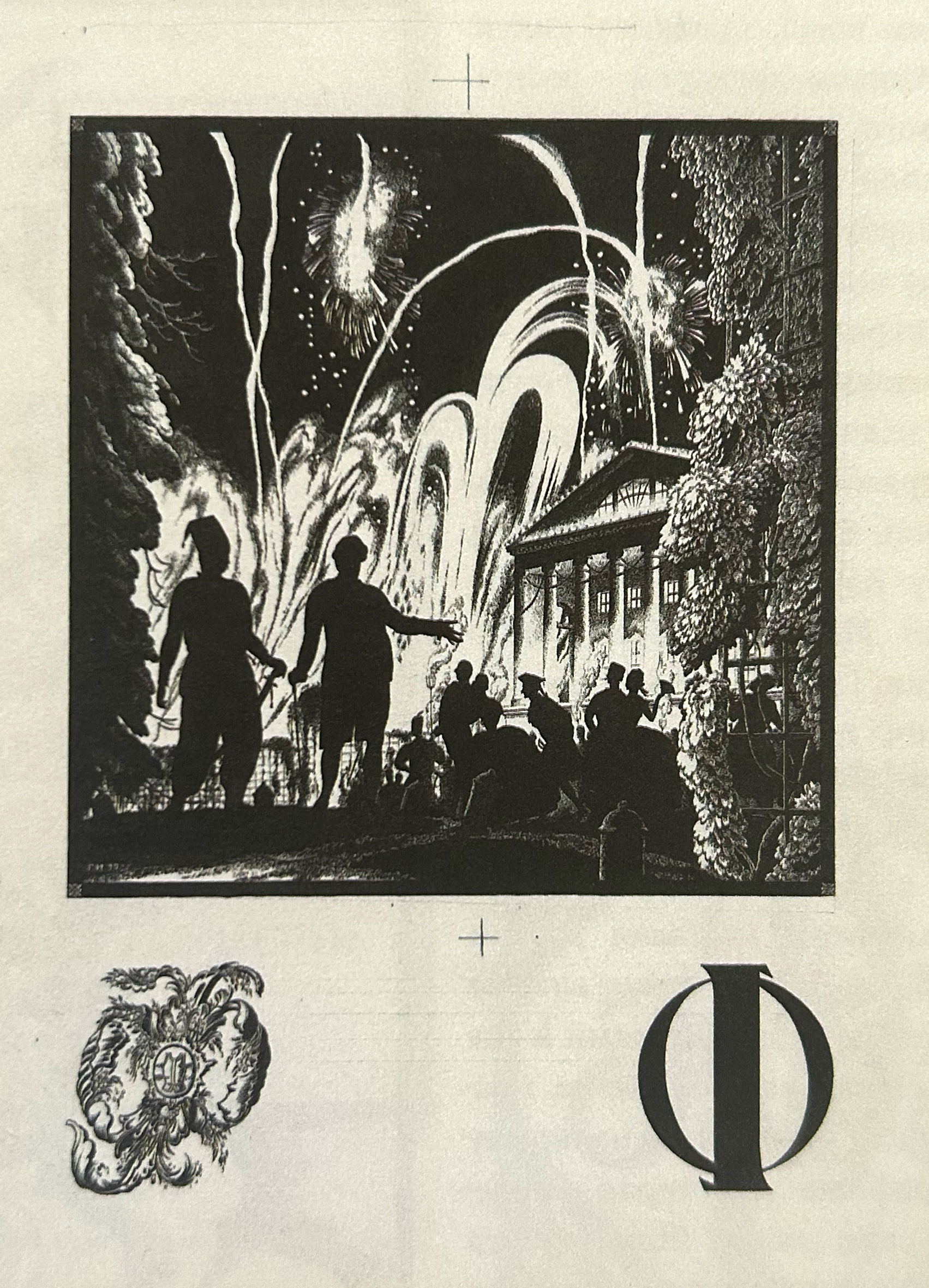Alphabet
The variation of Ukrainian letterform
Ruthenia
Abetka 33
In the search for Ukrainian letterform, many designers reach back to the very typographic core – the alphabet. One of the pioneers of this work was Heorhiy Narbut, a graphic designer of the early 20th century. Basing his work on thorough historical research, Narbut did not only design the identity of the Ukrainian National Republic but defined the visual style of the nation for centuries to come.
His most influential work in the text domain is "Ukrainian Alphabet" – the illustration book containing letterforms in the Ukrainian visual style. The variations of this alphabet the designer used in most of his works.
Narbut’s immense creative heritage lives in his works and those of his students. His take on the alphabet was a massive inspiration to generations of Ukrainian designers. Whether it is Narbut Abetka font, the digitalized version made by Hennadii Zarechiuk, or some adaptation of the original, Narbut's alphabet is used in design projects up to this day.



One of the most significant projects exploring Ukrainian letterform in the late 20th century is Ruthenia by Vasyl Chebanyk. The talented calligrapher and type designer dedicated 50 years of his life to researching "the original form of Ukrainian alphabet" – the one that is free from imperial influence:
The idea behind Ruthenia emerged in the mind of Vasyl Chebanyk many years ago. During one of the visits, Albert Kapr, the professor at the Academy of Fine Arts in Leipzig, challenged the calligrapher by asking why Ukrainian typographers were not developing their script. He referred to the Ruthenian alphabet, the form of Cyrillic documented in Carl Faulmann's 1880 "Das Buch der Schrift." From that question began Chebanyk's research. In the following decades, he reworked the Ukrainian alphabet based on the design heritage of Narbut, Skoropys, and the writing system of Kamyana Mohyla. As a result, Ruthenia now consists of a set of distinguishable glyphs enriched in symbolic meaning and historical Ukrainian graphic elements. Since 2005, the Constitution used for the presidential inauguration has Ruthenia on its cover.
The idea behind Ruthenia emerged in the mind of Vasyl Chebanyk many years ago. During one of the visits, Albert Kapr, the professor at the Academy of Fine Arts in Leipzig, challenged the calligrapher by asking why Ukrainian typographers were not developing their script. He referred to the Ruthenian alphabet, the form of Cyrillic documented in Carl Faulmann's 1880 "Das Buch der Schrift." From that question began Chebanyk's research. In the following decades, he reworked the Ukrainian alphabet based on the design heritage of Narbut, Skoropys, and the writing system of Kamyana Mohyla. As a result, Ruthenia now consists of a set of distinguishable glyphs enriched in symbolic meaning and historical Ukrainian graphic elements. Since 2005, the Constitution used for the presidential inauguration has Ruthenia on its cover.




Motivated by the legacies of past generations, Ukrainian type designers are currently fervently seeking to preserve Ukrainian identity. To honor some of the most successful contemporary typeface design projects, Abetka 33 was created.
Abetka 33 is a website showcasing specific facets of Ukrainian identity through typography. It features cases that draw from typographic heritage while incorporating contemporary design elements.
The project tells the story of Ukrainian resilience through individual letters. It consists of 33 articles, each focusing on Ukrainian symbols that hold cultural and practical significance in Ukrainian society. These articles serve as a curated gallery, and each one includes a link to the font used for the featured letter, along with the backstory of its creation.
Abetka 33 is a website showcasing specific facets of Ukrainian identity through typography. It features cases that draw from typographic heritage while incorporating contemporary design elements.
The project tells the story of Ukrainian resilience through individual letters. It consists of 33 articles, each focusing on Ukrainian symbols that hold cultural and practical significance in Ukrainian society. These articles serve as a curated gallery, and each one includes a link to the font used for the featured letter, along with the backstory of its creation.
